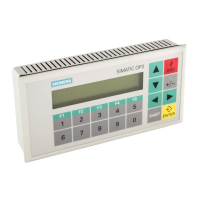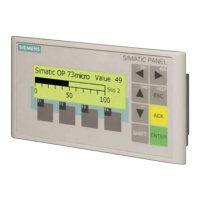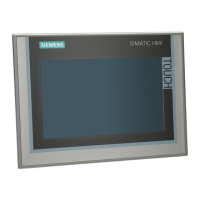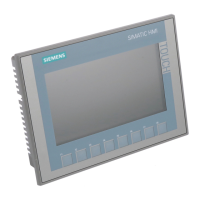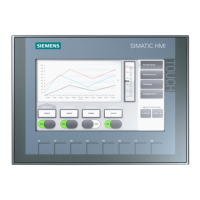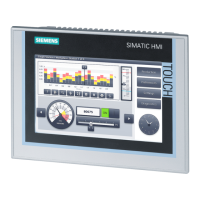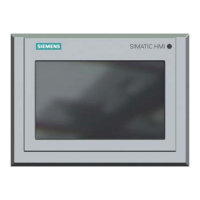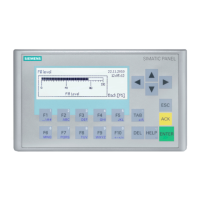1-4
Equipment
Manual OP7, OP17
Release 04/99
Alarm
messages show
, in contrast to event messages, critical machine states
dur ing production operations. Due to their ur
gency
, they have to be acknowl
-
edged before any other action is possible.
Alarm messages may contain process values. Process values are displayed
either numerically - for example
Motor speed 4500
or
symbolically - for example
Motor speed too high,
where
a specific control value is assigned to
too high.
This
type of message has a higher display priority than an event message. If
an alarm message is issued, any event message or screen that is being dis
-
played is replaced with a flashing alarm on the display
.
The classification of a message as an alarm message is made at the configu
-
ration stage.
When a product is made up of various ingredients in certain ratios, this infor
-
mation is stored in a so-called recipe.
T
ake orange juice for example. Its production and bottling requires that
orange concentrate and water be mixed in a certain ratio. These values are
stored as tags in a recipe.
Each recipe can be made up of several data records containing dif
ferent va
-
lues for the recipe.
The data can be edited in the OP
, transferred to the PLC and read out from
the PLC.
In the OP
, the recipes are combined by recipe number and title in a recipe
directory.
Help text consists of configurable additional information and operator in
-
structions relating to event messages, alarm messages and screens. If for ex
-
ample an alarm message arises, this enables additional information on how to
eliminate faults to be displayed.
Help text can also be displayed by pressing a key
, if required, when the
HELP
LED is on.
Messages can be printed in online mode by means of the printer connected to
the OP
. Furthermore, there is a possibility of printing all the event and alarm
messages that have accumulated in the buf
fer concerned.
Alarm
messages
Recipes
Help text
Logging
